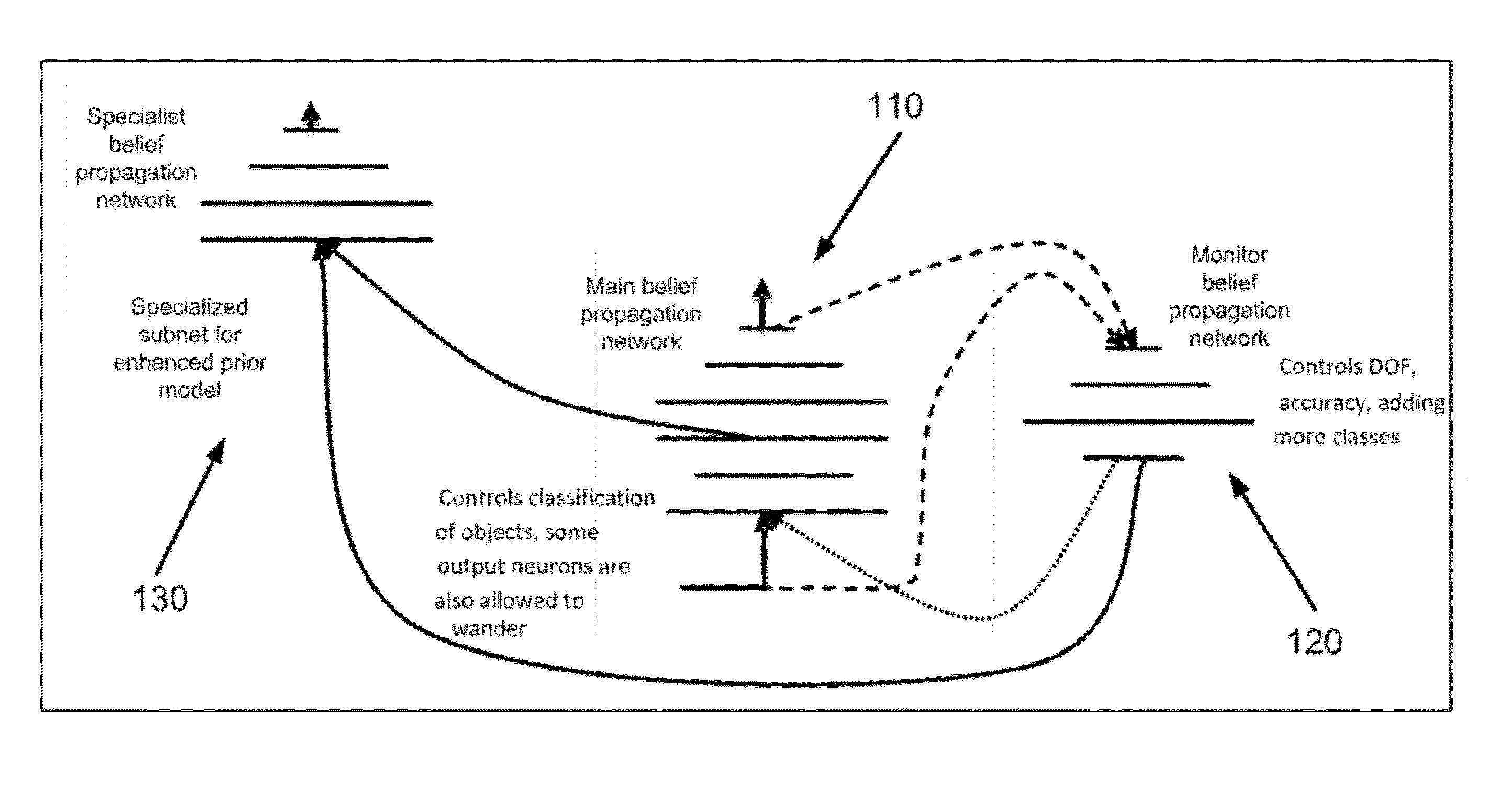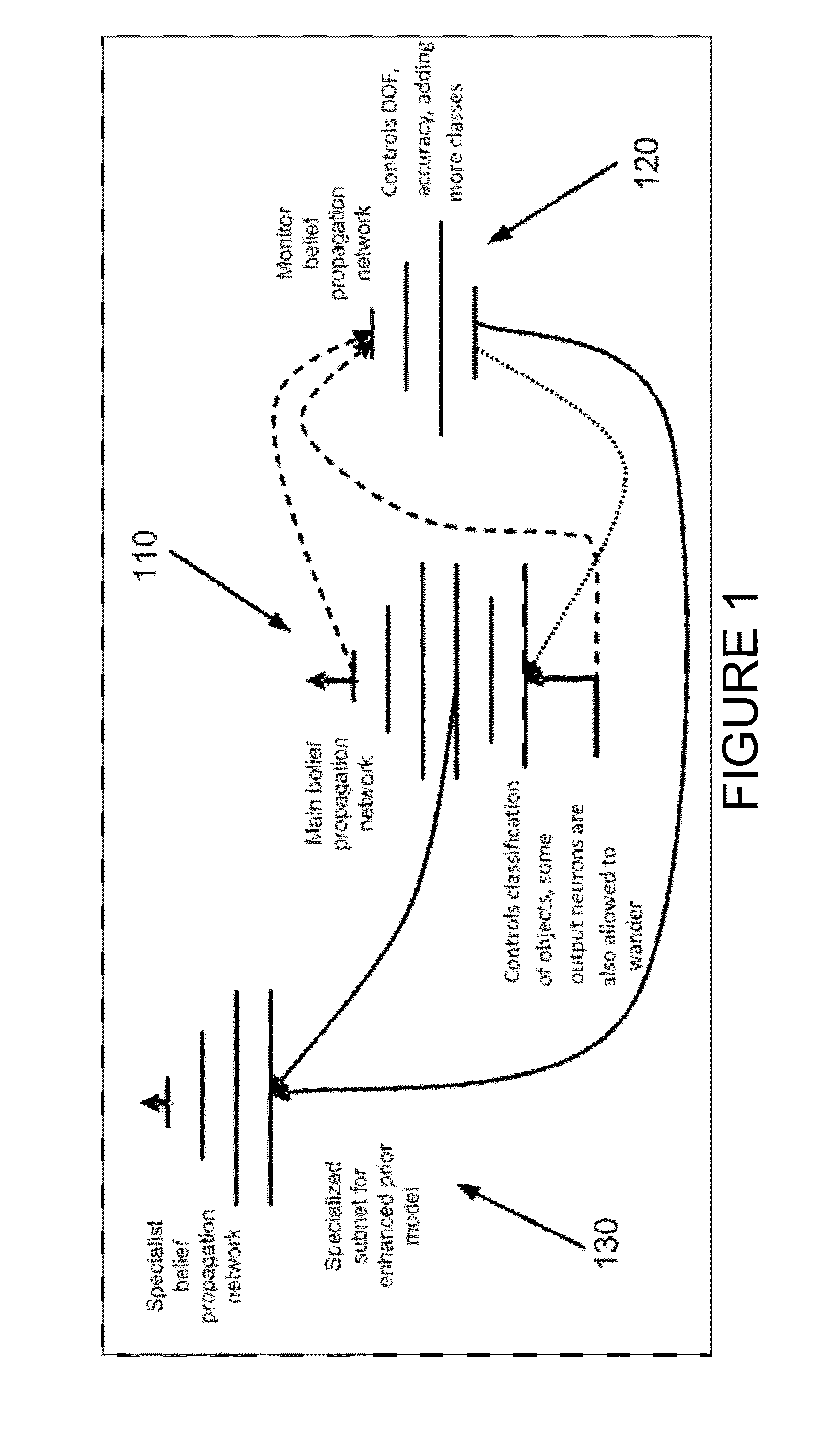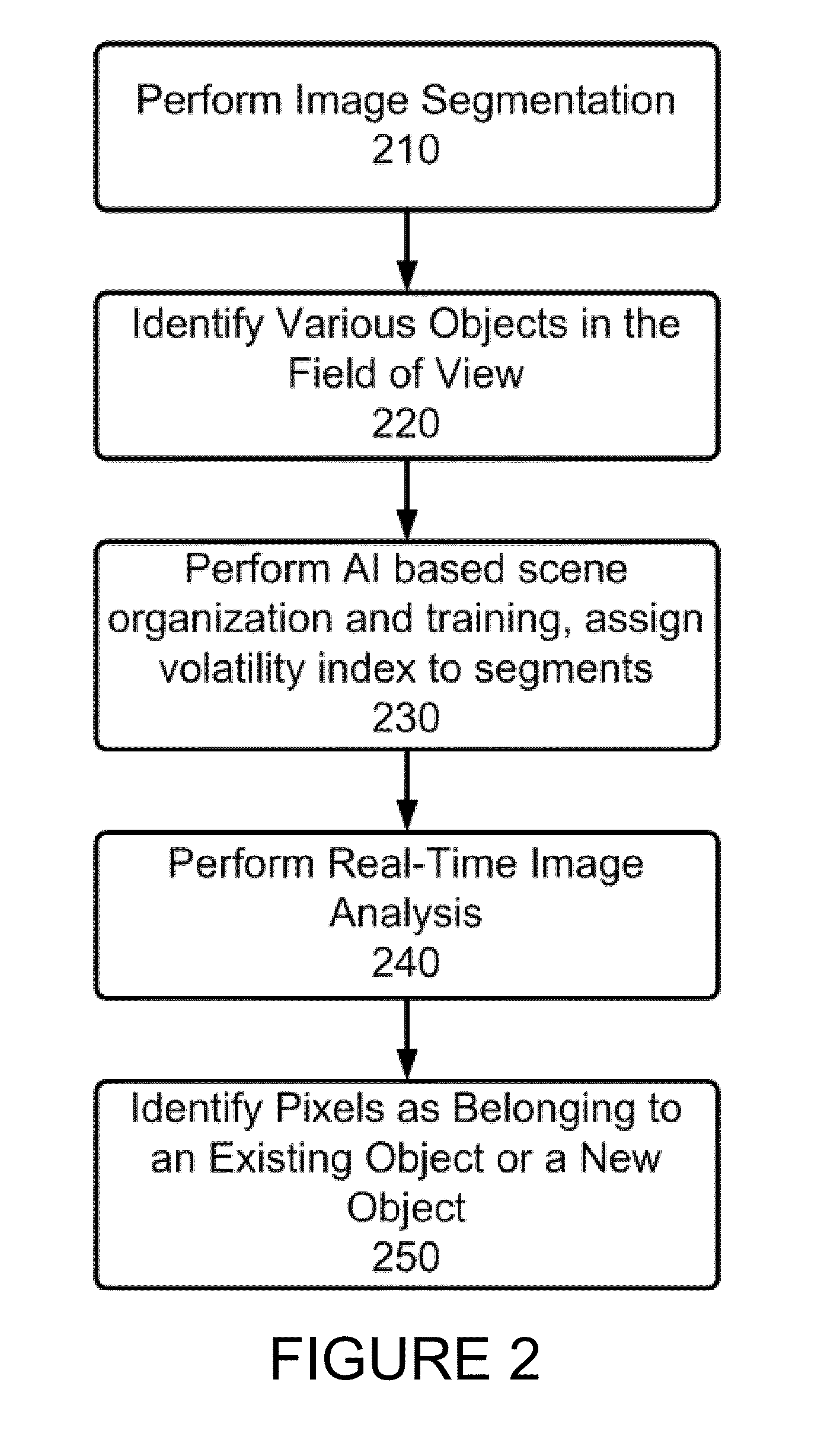Method and apparatus for confusion learning
a technology of confusion learning and learning methods, applied in the field of computer processing algorithms, can solve the problems of insufficient and inefficient background modeling approaches, severely affecting such approaches, and so on, and achieve the effect of reducing the error rate of acquisition and interpretation and being highly adep
- Summary
- Abstract
- Description
- Claims
- Application Information
AI Technical Summary
Benefits of technology
Problems solved by technology
Method used
Image
Examples
Embodiment Construction
[0046]One or more embodiments of the invention will now be described, making reference to the following drawings in which like reference numbers indicate like structure between the drawings.
[0047]Details of one or more preferred embodiments of the invention will now be provided making reference to the following drawings in which like reference numbers denote similar structure. Referring first to FIG. 1, a flowchart diagram is shown depicting a relationship between a main belief propagation network 110, a monitor belief propagation network 120, and a specialist belief propagation network 130. belief propagation network 110 performs a traditional deep belief network machine vision acquisition process, controls classification of objects, and allows some output neurons to wander, and is further monitored by monitor belief propagation network 120. belief propagation network 120 is adapted to control one or more features of acquisition by main belief propagation network 110, including but...
PUM
 Login to View More
Login to View More Abstract
Description
Claims
Application Information
 Login to View More
Login to View More - R&D
- Intellectual Property
- Life Sciences
- Materials
- Tech Scout
- Unparalleled Data Quality
- Higher Quality Content
- 60% Fewer Hallucinations
Browse by: Latest US Patents, China's latest patents, Technical Efficacy Thesaurus, Application Domain, Technology Topic, Popular Technical Reports.
© 2025 PatSnap. All rights reserved.Legal|Privacy policy|Modern Slavery Act Transparency Statement|Sitemap|About US| Contact US: help@patsnap.com



